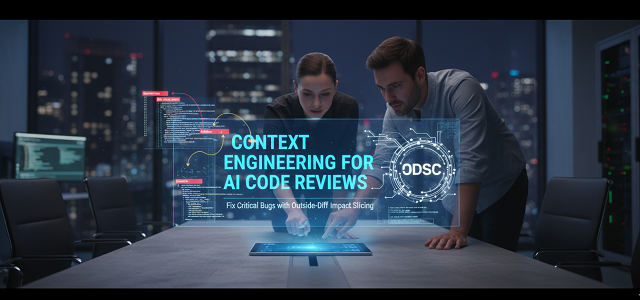
"TL;DR: Your AI can generate a React component in seconds but ask it to fix the bug in a 30-line PR and it hallucinates issues that don't exist. The problem isn't the model - it's the context, or the lack thereof. This post shares a compact technique called Outside-Diff Impact Slicing that looks beyond the patch to catch bugs at caller/callee boundaries. You'll run one Python script using OpenAI's Responses API with GPT-5-mini and get structured, evidence-backed findings ready to paste into a PR."
"Here's the thing about code review: the diff-view lies to you. It shows what changed, but not what those changes might break. For example, when you add a parameter to a function, the diff won't show you the twelve call sites that are now passing the wrong number of arguments. Or when you change a return type, the diff won't highlight the upstream code expecting the old format."
Diff views show what changed but not what those changes might break. Adding a parameter or changing a return type can break call sites that the diff does not highlight. AI code-review tools that only examine patches miss boundary bugs where changed and unchanged code interact. Outside-Diff Impact Slicing asks 'What's one hop away from this change?' and extracts callers and callees from the changed lines to reveal contract violations at caller/callee boundaries. A single Python script using OpenAI's Responses API with GPT-5-mini can produce structured, evidence-backed findings suitable for PR comments. The technique is most effective for focused PRs (10–50 changed lines).
Read at Medium
Unable to calculate read time
Collection
[
|
...
]